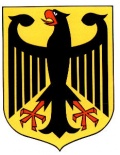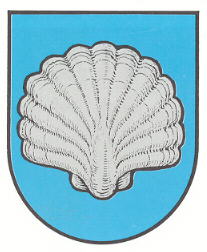Heiligenmoschel: Difference between revisions
Jump to navigation
Jump to search
Knorrepoes (talk | contribs) m (Text replacement - "/Arms of " to "/Arms (crest) of ") |
Knorrepoes (talk | contribs) m (Text replacement - "{{media}}" to " {{de1}} {{media1}}") |
||
| Line 25: | Line 25: | ||
The arms show a canting shell (Muschel) and are based on the oldest known seal of the village, dating from 1771. The colours were added arbitrarily in the early 20<sup>th</sup> century. | The arms show a canting shell (Muschel) and are based on the oldest known seal of the village, dating from 1771. The colours were added arbitrarily in the early 20<sup>th</sup> century. | ||
{{ | |||
{{de1}} | |||
{{media1}} | |||
[[Civic Heraldry Literature - Germany|'''Literature''']]: Debus, 1988 | [[Civic Heraldry Literature - Germany|'''Literature''']]: Debus, 1988 | ||
Revision as of 10:52, 26 December 2022
This page is part of the German heraldry portal Deutsche Wappensammlung |
Heraldry of the World |
|
German heraldry:
|
Selected collector's items from Germany:
|
HEILIGENMOSCHEL
State : Rheinland-Pfalz
District (Kreis) : Kaiserslautern
Verbandsgemeinde : Verbandsgemeinde Otterbach-Otterberg (until 2014 Verbandsgemeinde Otterberg)
| German |
In Blau eine silberne Pilgermuschel mit nach unten gekehrtem Schloss. |
| English | No blazon/translation known. Please click here to send your (heraldic !) blazon or translation |
Origin/meaning
The arms were granted on April 16, 1951.
The arms show a canting shell (Muschel) and are based on the oldest known seal of the village, dating from 1771. The colours were added arbitrarily in the early 20th century.
Literature: Debus, 1988


